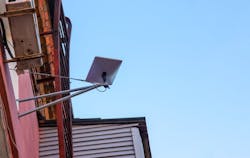NTIA Issues Guidance on Alternative Technologies for BEAD
The NTIA has released draft guidance on the use of alternative technologies in BEAD-funded projects. These technologies include unlicensed fixed wireless and satellite.
This should be promising news to companies who have been pushing back over the BEAD emphasis on fiber, which can be impractical in remote locations.
The NTIA is currently requesting public comment on the guidance, with a deadline of September 10th.
Alternative technologies
BEAD program director Evan Feinman reiterated that fiber remains the "gold standard," and that states must prioritize that technology, but noted that "where fiber is not economically feasible, states and territories have other options. NTIA’s existing guidance lays out how states and territories can ensure they are selecting the most reliable and scalable technology available to a location using fiber, hybrid fiber/coax networks, and licensed fixed wireless networks."
The requirement that must be met is speeds of 100/20 Mbps and latency of less than or equal to 100 milliseconds. "Reliable broadband" technologies are required, and fiber must be prioritized, followed by coxial and licensed FWA technology.
But in the areas where those technologies are too difficult or expensive, the NTIA will allow the use of unlicensed FWA and LEO satellite technology such as Starlink.
Addressing "two critical issues"
Feinman says there are two "critical issues" the guidance is intended to address.
One is to provide "guardrails for where states and territories may deploy alternative broadband technologies with BEAD funds."
It will require states to examine the current state of existing alternative technologies (and future deployment commitments), so that if the area is, or will be, covered by these technologies already and meeting the requirements, then "BEAD funds cannot be used to deploy another alternative technology project."
Secondly, the guidance is intended to detail how funding can be used for these alternative technologies, including "how states may fund projects using LEO satellite service."
About the Author
Joe Gillard
Executive Editor
Joe Gillard is a media professional with over 10 years of experience writing, editing, and managing the editorial process across a spectrum of innovative industries. Joe strives to deliver the best possible editorial product by focusing on the needs of the audience, utilizing the data available, and collaborating with a talented team.

